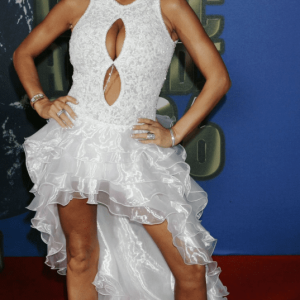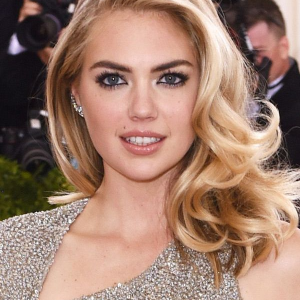Few performances in recent television have made a seismic impact like Alexandra Daddario’s portrayal of Rachel Patton in HBO’s The White Lotus. Known previously for her roles in blockbuster franchises and light-hearted romantic comedies, Daddario used this role to deliver a career-defining performance that stunned critics, captivated audiences, and completely reframed her Hollywood reputation.
With Rachel, Daddario didn’t just act—she transformed. She stepped into a character that, on the surface, seemed like another passive trophy wife. But beneath the surface, she revealed a layered, emotionally complex woman wrestling with identity, autonomy, and the emotional trap of luxury. This wasn’t just another role—it was a turning point.

A New Type of Role for Daddario
In The White Lotus, Rachel is introduced as a newlywed caught in a picture-perfect Hawaiian honeymoon that quickly deteriorates into emotional unrest. Her husband Shane, played with smug precision by Jake Lacy, embodies privilege and entitlement. As the episodes unfold, Rachel’s picture-perfect life begins to unravel—and with it, so does the illusion of her own happiness.
Daddario portrays this slow-burning disillusionment with graceful restraint. Rather than using grand gestures, she lets Rachel’s inner tension leak out through subtle glances, quiet silences, and pained smiles. Every shift in tone, every moment of hesitation, is a window into Rachel’s inner world—and Daddario makes each one count.
Video: The White Lotus | Official Trailer
The Power of Subtlety
What made her performance so magnetic was its simplicity. Daddario didn’t oversell Rachel’s emotional confusion. She allowed the audience to experience it right alongside her. The result? A character that felt real, relatable, and quietly devastating.
The White Lotus, created by Mike White, was already primed to succeed with its biting satire of wealth and privilege. But Daddario’s portrayal added emotional weight to the show’s narrative. Her story arc brought empathy and vulnerability to a series otherwise dominated by sharp edges and social critique.
A Role That Changed Everything

Daddario’s Rachel became more than just a supporting role—she became a lens through which viewers could examine performative relationships and the emptiness behind opulence. Was Rachel a victim of poor choices, or a woman on the edge of personal awakening? Daddario masterfully kept that answer out of reach until the final moments.
This performance earned Daddario her first Emmy nomination, cementing her transition from recognized name to critically acclaimed actor. For an actress who had long been boxed into supporting roles or typecast as the “pretty face,” the nomination was more than just recognition—it was validation.
Critics Take Notice

Major outlets like The New York Times and The Hollywood Reporter singled out her performance as one of the series’ most compelling. What could’ve been a flat character was instead injected with realism, sadness, and inner conflict—a testament to Daddario’s skill and evolution.
And while her acting was strong, it wasn’t just her delivery that spoke volumes. The show’s cinematography worked hand-in-hand with her performance, often placing Rachel in wide shots that visually emphasized her isolation. Daddario capitalized on these moments, using stillness and expression to convey Rachel’s silent descent into dissatisfaction.
Fashion as Character Psychology
Video: Rachel Meets Olivia & Paula By the Pool | The White Lotus
Wardrobe also played a quiet but powerful role in Rachel’s journey—and Daddario understood this intuitively. Early scenes show her in loose, flowing dresses that reflect her idealism and romanticism. As the show progresses, her outfits become tighter and more structured, reflecting her growing sense of constraint.
Instead of resisting these cues, Daddario embraced them, using every element of her appearance to support her character’s unraveling. From a soft gaze to a slumped posture, she never let the audience forget: Rachel is a woman losing control of a life she thought she wanted.
The Cultural Impact of The White Lotus

As The White Lotus gained traction and sparked cultural conversations, Daddario’s performance stayed at the center. The show became a viral success, not just for its plot twists and dark humor, but because it reflected deep emotional truths—and few characters embodied that more than Rachel.
People debated her fate long after the credits rolled. Did she choose comfort over growth? Did she settle or survive? The fact that Daddario left these questions open-ended speaks to the complexity she brought to the screen.

New Roles, New Recognition
Post-White Lotus, the industry began to view Daddario differently. Casting directors who once typecast her began to see her potential for more emotionally charged, nuanced roles. She started receiving scripts that prioritized character development over camera appeal. Directors praised her commitment, emotional range, and ability to disappear into a role.
She proved that she could bring depth and vulnerability to the table—without losing her mainstream appeal. It was a rare and powerful combination, and Hollywood took notice.
From Eye-Catching to Award-Worthy

Daddario’s journey mirrors that of many actresses who initially gain attention for their looks but must fight to be taken seriously. What sets her apart is how she handled that shift—with grit, grace, and intelligence.
She didn’t wait for the perfect role to come along. She took one with potential and elevated it. Her work in The White Lotus is now referenced as a textbook example of how an actor can take a secondary character and make them unforgettable.
Conclusion: A Defining Moment in a Rising Career
Alexandra Daddario’s performance in The White Lotus wasn’t just good—it was career-altering. She took a role built on quiet tension and turned it into a breakout moment that stunned audiences and redefined her trajectory. She proved she could do more than play a part—she could carry emotional weight, spark cultural conversation, and keep people talking long after the final episode aired.
From here on out, Daddario isn’t just “the actress from that movie.” She’s an Emmy-nominated powerhouse, ready to take on roles that challenge her—and move us.


